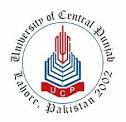Vortrag: UNRAVELING CONVERSATIONS IN NEUROTYPICAL- NEURODIVERGENT DYADS: A STUDY OF REPAIR IN INTERACTIONAL LOOPS

This study investigates the patterns of repair in conversations between children with autism and their family members/speech therapists. This study, by keeping in view the characteristics of autism, defines such children as neurodivergents and their co-interlocutors are named as neurotypicals. The central argument of the thesis is that communication breakdowns, which occur during neurotypicals-neurodivergents conversations, are repaired in distinctive ways and this calls for the need of a unique methodology for carrying out such sort of studies. The data for the present study are gathered through audio-recording conversations between neurotypicals and neurodivergents. The data are recorded in both home and clinical settings. The collected data is analyzed by methods of conversation analysis. The results of the study show that children who suffer from autism have impairment in social communication and interaction. The neurotypicals when indulge in conversation with such children seem to repair this impairment by (may be unconsciously) constructing conversation interactional loops. The study introduces different categories of loop each of which reciprocates to the amount of exertion required to repair it. Finally, the study concludes that this new proposed methodology can help in improving our current level of understanding regarding the mechanism of repair, which occurs during conversations involving atypical population.
This dissertation investigates the patterns of repair in conversations between children with autism and their family members/speech therapists. It is carried out by getting insights from the methodology of conversation analysis. It aims to show the ways communication breakdowns are repaired during children’s (suffering from autism) conversations with other people. This study, by keeping in view the characteristics of autism, defines such children as neurodivergents and their co-interlocutors are named as neurotypicals. The central argument of the thesis is that communication breakdowns, which occur during neurotypicals-neurodivergents conversations, are repaired in distinctive ways and this calls for the need of a unique methodology for carrying out such sort of studies. The data for the present study are gathered through audio-recording conversations between neurotypicals and neurodivergents. The data are recorded in both home and clinical settings. The collected data show that children who suffer from autism have impairment in social communication and interaction. The neurotypicals when indulge in conversation with such children seem to repair this impairment (may be unconsciously) by constructing conversation interactional loops. This act on the part of neurotypicals may be compared to the way engineers enable machines to communicate with humans. In both cases, every single conversation interactional loop comprises four different processes namely listen, understand, process and respond. The neurotypicals employ multiple strategies to construct a particular loop. The deployment of a particular type of strategy depends upon the competence of the neurotypicals, theme of the talk, the child’s linguistic ability, and behavioral issues faced by the child. The study highlights the need for shifting focus from turns to loops while exploring patterns of repair in any study involving the neurodivergent population. Moreover, the study introduces different categories of the loop each of which reciprocates to the amount of exertion required to repair it. Finally, the study concludes that the proposed methodology can help in improving our current level of understanding regarding the mechanism of repair, which occurs during conversations involving atypical population.
Key Words: Autism, Conversation analysis, Repair, Conversation, Interactional loops
Info
Tag:
21.11.2020
Anfangszeit:
18:45
Dauer:
00:30
Raum:
Ruqaiya Hasan
Track:
Applied Linguistics
Sprache:
en
Links:
Feedback
Uns interessiert Ihre Meinung! Wie fanden Sie diese Veranstaltung?
Gleichzeitige Events
ReferentInnen
| irfan |